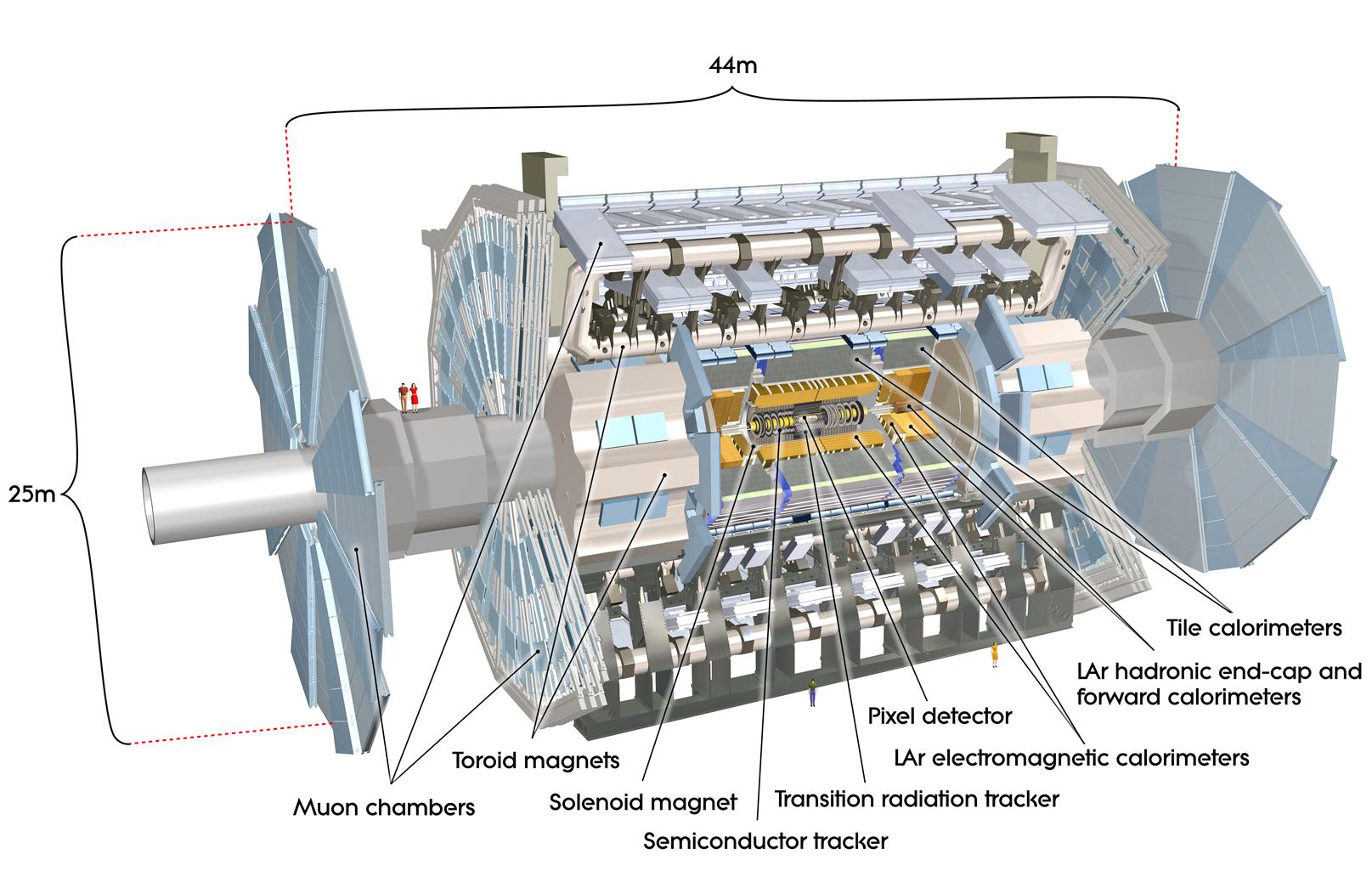ATLAS detector at the LHC
A particle detector is a device used to detect, track, and/or identify ionising particles, such as those produced by nuclear decay, cosmic radiation, or reactions in a particle accelerator. The ATLAS detector at the LHC is a multipurpose particle detector with a forward–backward symmetric cylindrical geometry and nearly full coverage in solid angle. The name ATLAS is an acronym for "A Toroidal LHC ApparatuS" given that the magnetic field is produced by toroidal magnets.
The layout of the ATLAS detector is presented below:

It consists of an inner tracking detector (ID), electromagnetic and hadronic calorimeters, and a muon spectrometer. The inner detector, including the insertable B-layer, provides charged-particle tracking from silicon pixel and microstrip detectors in the central region, surrounded by a transition radiation tracker that enhances electron identification.
The ID is surrounded by a thin superconducting solenoid providing an axial 2 T magnetic field, and by a fine-granularity lead/liquid-argon electromagnetic calorimeter, which provides energy measurements of electromagnetic showers.
Hadron calorimetry is also based on the sampling technique, with either scintillator tiles or liquid argon as the active medium and with steel, copper or tungsten as the absorber material.
An extensive muon spectrometer with an air-core toroid magnet system surrounds the calorimeters. It includes three layers of high-precision tracking chambers. The field integral of the toroid magnets ranges from 2.0 to 6.0 Tm across most of the detector.
The ATLAS detector is split into a barrel part, where detector layers are positioned on cylindrical surfaces around the beam axis, and two end-cap parts, where detector layers are positioned in planes perpendicular to the beam pipe.
For much more information about the ATLAS detector, take a look at the ATLAS Detector & Technology website.